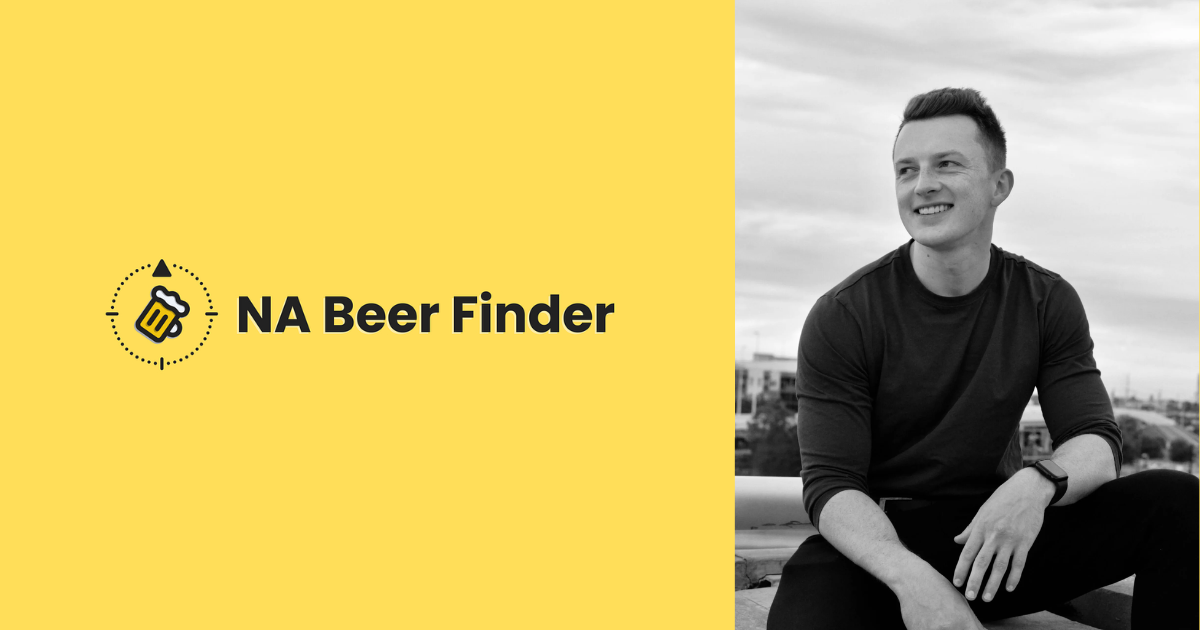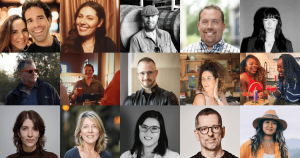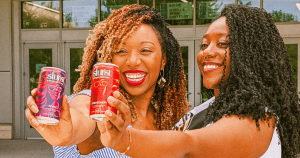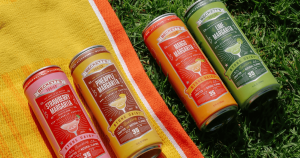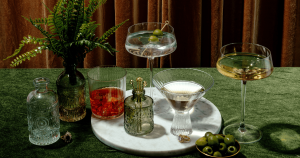When Tim Katzgrau quit drinking, his personal passion turned into a business opportunity.
What started as a personal list of local spots with non-alcoholic beer options quickly became NA Beer Finder, a global directory and app that now connects users in over 150 countries to restaurants, bars, and stores with non-alcoholic offerings.
In this conversation, Tim opens up about the health scare that started it all, the scrappy early builds that won over Reddit, and the bold leap that turned a side project into a sustainable business.
Dry Atlas: Take us back to the beginning. What was going on in your life when you first built NA Beer Finder?
Tim Katzgrau: I used to drink every night. It started as a way to help me sleep, but it soon became how I dealt with any type of stress, big or small. After five years of letting it run my life, I ended up in the ICU with acute pancreatitis and liver failure. Would not recommend.
I knew I couldn’t keep drinking, but I still wanted that social side—and honestly, I just really like beer. I started keeping a list on my phone of every bar, store, and restaurant with NA beer, and it got huge. So I turned it into a website I could filter and search. That’s how NA Beer Finder started. It’s basically my city’s entire NA scene in my pocket.
DA: How did your own health scare shape your perspective on the non-alcoholic space?
TK: When I was drinking, you’d never catch me with anything NA. I was totally one of those “what’s the point of NA drinks?” people and had no plans to quit. But when I was forced to stop, that changed fast. NA drinks basically became a tool for survival.
So naturally, I wanted to map out all the venues with amazing NA selections, because if a place cares that much about its NA options, it’s probably full of great people too.
DA: At what point did you realize this tool could help more than just you?
TK: Most people look at a restaurant’s menu before going out. You know what you like to eat; it’s pretty simple. NA Beer Finder is the same thing, but for the non-alcoholic drink menu.
The problem was that finding those menus meant going to individual websites, digging through Google reviews, and still having a 50/50 shot of finding anything. Tons of places don’t list their NA options online, and it just took way too much time.
Once I built the prototype and realized it saved me hours of searching, I knew pretty early on that what I’d built was something really useful, not just for me but for anyone looking for NA drinks.
DA: You’ve called it a “scrappy personal project.” What tools or resources did you use to build the first version?
TK: The first version was literally a single HTML file with a zip code field. It was super rough. When you hit submit, it would ping a few web scrapers I’d set up, scrape Google reviews and websites, then slowly pull everything together before showing results.
I still remember using it at a bar for the first time. I stood there for 45 seconds waiting for it to load while my friends yawned. It was kind of embarrassing, but it eventually worked. I knew I just needed to make it faster, and I’d have something viable.
DA: You launched on Reddit. What made that the right choice for you?
TK: On Reddit, there are communities for everything, including NA beer. If people like what you post, they upvote it, and that alone helps it reach way more users.
I liked that it wasn’t about ads or algorithms. It’s just people sharing interesting and useful stuff and upvoting what they like. The initial NA Beer Finder post I made clicked with a lot of users because it was super relevant to that community. Nothing like it existed yet, and it immediately provided value to everyone. The post completely blew up. Within 24 hours, I had hundreds of users and an inbox full of feature requests.
DA: What kind of feedback were you getting from those first users, and how did it influence the product?
TK: The main one was, “Add more brands! Add more brands!” That came up a lot!
But there were also smaller ideas that ended up being huge, like adding a bar or store filter, sorting by distance, quick directions links, and a community submission form. Those are all still core features today.
Once those went live, people could finally answer specific questions like, “Which bars have Guinness 0 near me?” The submission form gave everyone a way to shape the map themselves, which helped it grow way faster than I expected.
DA: Your growth loop was simple but powerful: share, get feedback, improve, repeat. Why do you think it worked so well?
TK: Because it was all community-driven. I wasn’t guessing what people wanted, because they were literally telling me. I’d share an update, get instant feedback, fix it, and post again. That loop built trust fast, and people became a part of it.
When users see their ideas actually show up in the product, they stick around and keep contributing. It stopped feeling like my project and started feeling like our project.
DA: Were you ever tempted to grow through other social media channels—Instagram, TikTok—or was Reddit always the plan?
TK: I use Instagram, @beerfordriving, to post city guides and updates, but it’s tough when the algorithm decides who sees what. I’d put hours into a post, and it would reach 200 people. On Reddit, I’d spend 20 minutes and reach 20,000. The math was pretty clear that Reddit was just a better fit for me.
DA: How do you think Reddit shaped the tone or culture of your community compared to other platforms?
TK: Reddit is anonymous, so the discussions are completely raw and unfiltered. Nothing is sugarcoated, and people freely share criticism, report bugs, and suggest new features.
Early on, I helped kickstart the subreddit by driving traffic from my website and newsletter, but over time it found its own rhythm. Now the community runs on organic posts—like reviews, industry news, and new beer releases—while I just keep things organized and jump in when there’s something new to share.
DA: When your web scraping costs hit $1,200/month, you made a bold decision: sell everything, leave the U.S., and start charging. What led to that pivot?
TK: It came down to a choice: shut down NA Beer Finder or give it everything I had. The operating costs kept climbing with every brand and user, and I knew I couldn’t afford to keep it going much longer. I tried covering the costs with ads and partnerships, but it never fully added up and took time away from building the product itself.
It was frustrating because my goal was to help people. I’d gotten many messages from users saying the site helped them stay sober. One person even told me it saved them. I couldn’t just let it die knowing that.
So I sold everything I owned, left the U.S., and moved to lower-cost countries like Vietnam and Albania. The extra cash could buy a few months of hosting while I rebuilt it under a paid model. It was a huge risk, but it gave the project a real shot at surviving. And it worked.
DA: Why did you price the subscription at $19.99/year? How did your community respond to the shift from free to paid?
TK: I priced it at what it actually takes to run and grow it. Scraping data, servers, and maintenance are real costs. I wanted it to be sustainable without running ads or cutting corners. $19.99/year felt like the right balance between accessible and profitable.
When I made the switch, I gave lifetime access to anyone who’d ever donated, even a dollar. It felt right to reward the people who believed in it early.
Most people understood the move. They knew I’d left the U.S. to rebuild it and that I was serious about turning it into something lasting. It was the only way to keep growing and help more people.
DA: You now have over 10,000 users across 150 countries. What’s surprised you most about how people are using NA Beer Finder today?
TK: What’s surprised me most is the range of ways people use it. It’s huge with travelers. Some check it before every work trip or vacation to see which cities actually have options. Others use it to update their favorite local spots, essentially curating the guide for their own town.
Dozens of new venues get submitted each week, and I’ll still see “NA Beer Finder” pop up in articles or posts I had nothing to do with. When people share it without me asking, that tells me it’s actually solving a real problem.
DA: Looking back, what’s one thing you would have done differently in the early days?
TK: I would have charged users earlier.
At first, I only asked for donations because I thought a paywall went against my mission “to help people live healthier lives by connecting them with nearby non-alcoholic options.” I saw it as a community resource, not a business. But over time, I realized that if I didn’t treat it like a business, it wouldn’t survive.
I then came across a line that reframed everything: “Charity doesn’t scale.”
If you build something that helps people, charging for it isn’t selling out. It’s what allows it to grow and help more people. By trying to keep everything free, I was actually limiting how many people I could reach.
DA: What advice do you have for other founders building in emerging or niche spaces like non-alc?
TK: Community is everything. I wouldn’t have gotten so much momentum without Reddit. It’s where I launched, got feedback, and met people who actually cared about the space.
If you’re building in a niche, start where the conversations are already happening. Listen more than you talk, share what you’re working on, and let people be part of it. That kind of feedback loop is way more valuable than any marketing plan.
DA: How do you see the non-alc landscape evolving over the next few years?
TK: It’s growing fast and evolving in a really interesting way. A few years ago, NA beer was an afterthought. Now you’ve got entire breweries built around it, and the quality has jumped massively.
At the same time, the space is blending into something bigger with THC seltzers, RTD mocktails, and functional drinks. What used to be “non-alcoholic” is becoming a full category of better alternatives.
It’s not a trend anymore. It’s becoming part of normal life, and we’re still early. That’s why I’ll be expanding NA Beer Finder beyond just beer. As the category grows, finding what’s actually available near you becomes a real challenge, and that’s exactly what I’m solving.


